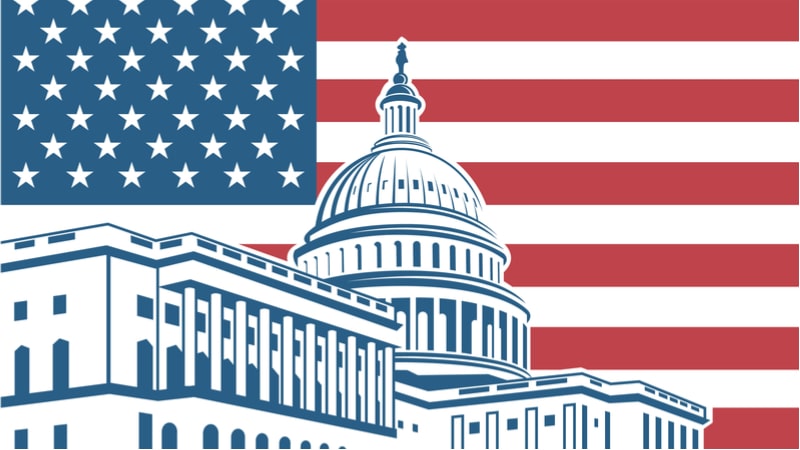
While discussing the threat that the Chinese government poses to America when it comes to cybersecurity, one congressman said today that our nation should look to implementing a Cyber National Guard Corps.
During SolarWinds’ Secure by Design event on Capitol Hill Monday, Rep. Raja Krishanmoorthi, D-Ill., said that people are “hungering” for the ability to serve for a cyber-specific National Guard.
“Honestly, maybe it’s something we can look into together,” Rep. Krishanmoorthi said to SolarWinds President and CEO Sudhakar Ramakrishna. “Because I think that having a Cyber National Guard Corps could be something that a lot of folks can contribute to.”
The congressman emphasized the notion that government needs to fill the cyber workforce gap to protect against adversaries like China, pitching the idea that cybersecurity education should be skills-based and not require a four-year college degree.
“We do need to create incentives to destigmatize skills and vocational-based education and then create resources so that high schools and community colleges can prepare people for these jobs in the future,” Rep. Krishanmoorthi said during the June 12 event. “That’s what we have to do with cybersecurity radically at this point.”
The Intelligence and National Security Alliance – a trade group focused on partnerships to address intelligence and national security priorities – also recently made a push for the creation of a Cyber National Guard to defend against attacks on critical U.S. infrastructure.
It has been proven time and again that the issue is not a partisan one.
Rep. Darrell Issa, R-Calif. – who sits on the House Foreign Affairs Committee – called for a nationwide solution in America to China infiltrating and stealing data from government, academia, and industry systems.
“Our systems have failed us repeatedly,” Rep. Issa said during the panel. But he remained hopeful, saying that “we can stop those kinds of breaches” by leveraging AI to detect adversaries.
“That works in defense. It’ll work in our universities, and it will begin working even for the individual with alerts,” Rep. Issa said. “We have to do all of that, and I know we can, but we can’t do it unless we have an America-wide solution, one that points to China, but doesn’t exclude the rest of the world and bad actors.”
Earlier this year, the White House released its National Cybersecurity Strategy, which pinpoints the idea of disrupting and dismantling threat actors by using “all instruments of national power.” Part of that effort, the strategy says, will include “engaging the private sector in disruption activities through scalable mechanisms.”
“[Chinese Communist Party] actors likely have the ability to also execute disruptive attacks on our critical infrastructure,” CISA’s Executive Assistant Director for Cybersecurity Eric Goldstein said during the event in Washington, D.C. “So, the criticality of this moment to driving real change in our country couldn’t be more important through the National Cybersecurity strategy.”
Goldstein noted that the biggest advantage the government has is partnerships with private-sector companies.
“We know that the U.S. government is not going to have deep visibility into cyber threats targeting domestic networks,” Goldstein said. “We don’t need it because we can work closely enough with the private sector such that if we are seeing what partners – like SolarWinds or Google or CrowdStrike or Microsoft, name your company – we’re working with them now day in and day out to see what they are seeing and then turn that around and use it to defend our country.”
Goldstein said that the goal of these public-private partnerships is to make it clear to adversaries that targeting American networks is going to impose a high cost “because our security is sufficient to deter the most common kinds of attacks,” but also that the government will leverage “all levels of power and response.”
Ramakrishna agreed with all of the panelists that public-private partnerships are key to fighting America’s adversaries and winning the race to the top, but that they still have a ways to go when it comes to implementing top-tier transparency within collaboration.
“Unfortunately, the state of public-private partnership does not actively promote [transparency] yet. And the reason I say yet is because I’m very optimistic we’ll get to that point,” Ramakrishna said. “But as of today, there’s actually a greater incentive for non-disclosure than disclosure, and I think that’s an area where we can all collaborate better.”
“We have pledged transparency and … we said transparency, collaboration, and humility will be part of who we are. That was a very, I would say contrarian approach two and a half years ago, but I’m super gratified that it is no longer a contrarian belief system today,” he continued, adding, “Thanks to the efforts of the community and what can we do to further it and accelerate it is what I believe we need to be doing together.”
